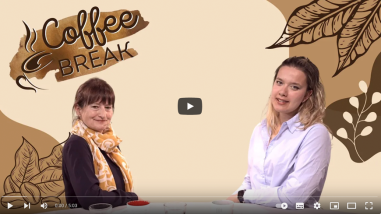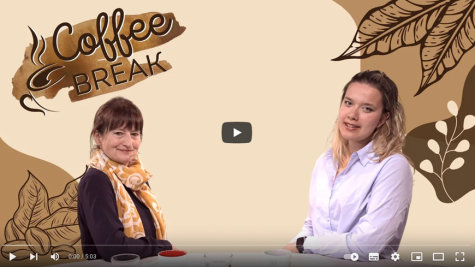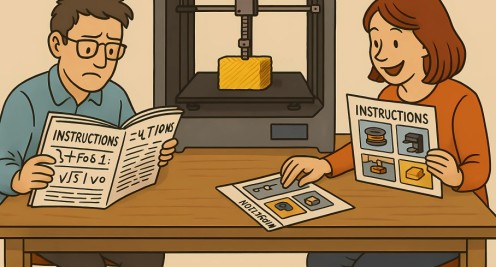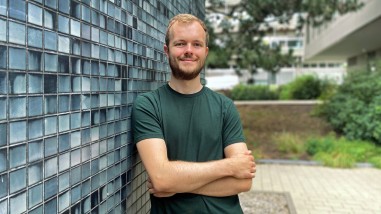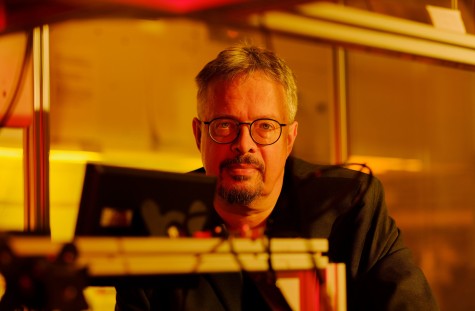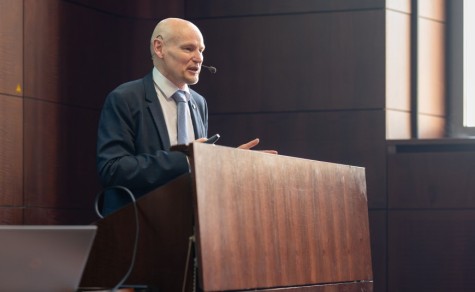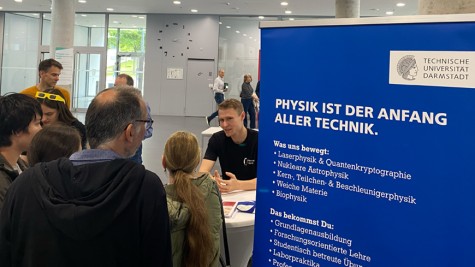-
![]()
![]()
Vodcast: Coffee Break with… Prof. Regine von Klitzing
2025/08/22
In conversation with #studentsofTUdarmstadt ambassador Sara Bevilacqua
Why is it worth pursuing a Master’s degree in Physics at TU Darmstadt? And what makes studying here so special? Prof. Dr. Regine von Klitzing, head of the research group Soft Matter at Interfaces at the Institute of Condensed Matter Physics and Vice Dean of the Department of Physics, shares her insights in the latest episode of the English-language vodcast “Coffee Break with Sara”.
-
![]() Picture: ChatGPT/Timothy George Backert
Picture: ChatGPT/Timothy George Backert![]() Picture: ChatGPT/Timothy George Backert
Picture: ChatGPT/Timothy George BackertHow can a complex problem be simplified?
2025/07/24
TU researchers develop new method for a better understanding of quantum mechanical systems
A research team led by TU Darmstadt has transformed a difficult problem in quantum physics into a much simpler version through innovative reformulation – without losing any important information. The scientists have thus developed a new method for better understanding and predicting difficult quantum mechanical systems.
-
![]() Bild: Physik | TU Darmstadt
Bild: Physik | TU Darmstadt![]() Bild: Physik | TU Darmstadt
Bild: Physik | TU DarmstadtRico Holz | M.Sc.
2025/07/23
Neu bei uns am Fachbereich im IKP | AG Obertelli
Wir haben Rico Holz zum Start ein paar Fragen zu seinem Forschungsgebiet und seiner neuen Position als Doktorand gestellt.
-
![]() Bild: Neue Visionen
Bild: Neue Visionen![]() Bild: Neue Visionen
Bild: Neue VisionenQuantum trifft Kino!
2025/07/17
Filmabend mit Vortrag zur Quantenmechanik
Ein Abend für alle, die neugierig sind auf die Quantenwelt oder einfach Lust auf eine besondere Filmvorstellung auf dem Campus der Technischen Universität Darmstadt haben.
-
![]()
![]()
Podcast mit Prof. Markus Roth
2025/07/15
„Heinermania – Der Podcast für Darmstadt“ hat in seiner aktuellen Folge Prof. Markus Roth zu Gast.
Markus Roth, gebürtiger Darmstädter, studierte in seiner Heimatstadt Physik und ist Professor für Laser- und Plasmaphysik am Institut für Kernphysik der TU Darmstadt.
-
![]() Picture: TU Darmstadt | Patrick Bal
Picture: TU Darmstadt | Patrick Bal![]() Picture: TU Darmstadt | Patrick Bal
Picture: TU Darmstadt | Patrick BalProfessor Thomas Nilsson becomes first “affiliate professor”
2025/06/16
TU Darmstadt honors renowned Swedish experimental physicist
On June 13, 2025, TU Darmstadt awarded the academic title of “Affiliate Professor” to an internationally renowned scientist for the first time. Professor Dr. Thomas Nilsson, professor at Chalmers University (Sweden) and Scientific Director of the GSI Helmholtz Center for Heavy Ion Research and FAIR GmbH, is now officially affiliated with the Department of Physics.
-
![]()
![]()
Faszination Physik – So war der Open Campus Day 2025
2025/06/04
Am 25. Mai öffnete die TU Darmstadt ihre Türen mit dem Open Campus Day und wir vom Fachbereich Physik waren mit spannenden Angeboten für große und kleine Gäste dabei!
-
![]()
![]()
Rückblick: TUdiscover-Lecture for KIDS begeistert Jung und Alt
2025/05/20
Am 26. April 2025 hieß es im Großen Physikhörsaal der TU Darmstadt wieder: Entdecken, Staunen, Mitmachen!
Über 150 Kinder und Erwachsene verfolgten gespannt die Kindervorlesung „Faszination Licht“ mit Prof. Markus Gräfe, der das Publikum mit einer Mischung aus Experimenten, anschaulichen Erklärungen und viel Interaktion begeisterte.
-
![]()
![]()
Faszination Physik – Quanten? Kann man sehen!
2025/05/14
Beim Open Campus Day am 25. Mai 2025. Erlebe spannende Experimente und entdecke dein Physik-Studium an der TU Darmstadt!
-
![]()
![]()
Physik live und zum Anfassen? Gibt’s bei uns!
2025/05/14
Mit unseren Laborführungen zur „hobit contact“ am 20. Mai 2025, jeweils ab 13:00 h
Am Dienstag, den 20. Mai 2025, findet von 09:00–13:00 Uhr die „hobit contact“ statt – dein Live-Event für Studieninfos und Einblicke in den Campus-Alltag. Und das Beste: Jeweils ab 13:00 Uhr kannst du bei unseren kostenlosen Laborführungen die Welt der Physik live entdecken – hier erlebst du Forschung hautnah und kannst deine Fragen direkt an unsere Wissenschaftler*innen stellen.
Department of Physics
Archive
Archive

